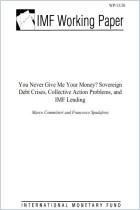Join getAbstract to access the summary!

Join getAbstract to access the summary!
Carmen M. Reinhart and Christoph Trebesch
Sovereign Debt Relief and Its Aftermath
CESifo Group Munich, 2015
What's inside?
Noted economists explain the effect sovereign debt relief has on a country's long-term economic health.
Recommendation
While Greece’s sovereign debt issues have brought the subject of debt relief to the forefront, the topic is not new. During the 1920s and 1930s, countries suffering the lingering effects of World War I struggled to repay loans. More recently, the 1986 Baker Plan and the 1990 Brady Plan responded to debt crises in emerging markets. Economists Carmen M. Reinhart and Christoph Trebesch analyze those experiences and their results to determine what did and didn’t work then, and to argue in favor of debt forgiveness as a potential way of resolving modern-day Europe’s ongoing issues. getAbstract recommends their astute report to economists and policy makers.
Summary
About the Authors
Carmen M. Reinhart is a professor of the international financial system at Harvard University. Christoph Trebesch is an assistant professor in the department of economics at the University of Munich.






















Comment on this summary